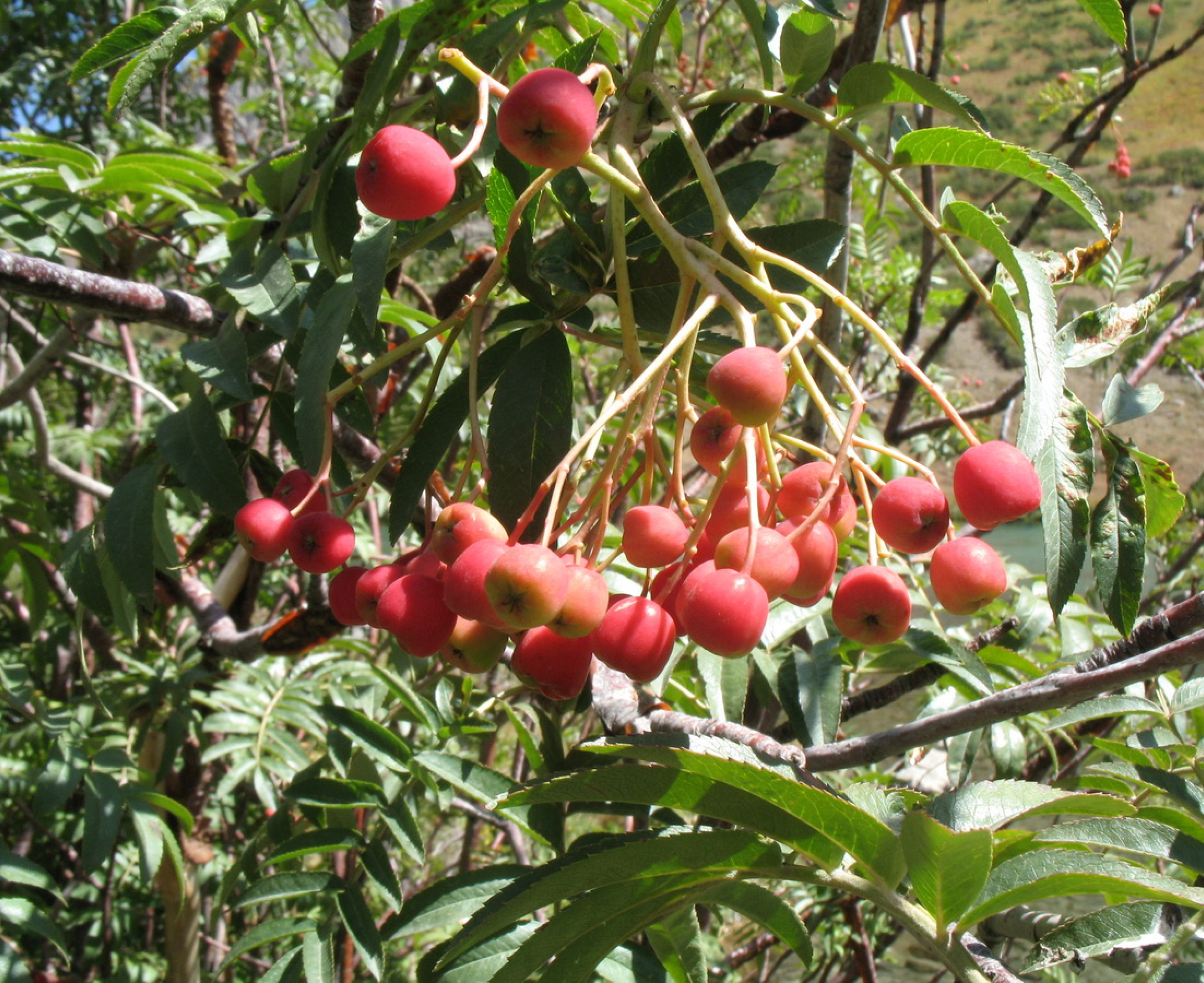
Tien Shan
Rowan
Тяньшань шетені
Sorbus tianschanica Rupr.
Family:Rosaceae
1
Distribution
It grows in mountain spruce forests and shrubs, rising to 3000 m high.
Status. A widespread species.
The importance of the taxon in the preservation of the gene pool. Decorative, food, medicinal and honey-bearing plant [1, 2].
Botanical description. A tree with a height of 4-15 (sometimes up to 20) m and a trunk diameter of up to 30-40 cm, with an egg-shaped crown and smooth grayish-white bark, sometimes a shrub.
The leaves are unpaired, alternate, lanceolate, 10-20 cm long, with 10-15 oblong, whole leaflets 3-5 cm long, 1-1.5 cm wide, on short pubescent petioles.
The flowers are 0.8—1.5 cm in diameter, white with creamy yellowness, have a strong sharp unpleasant odor, reminiscent of the smell of bitter almonds; they are collected in multi-flowered pubescent, dense corymbose inflorescences with a diameter of up to 10 cm located at the ends of shortened shoots. The flowers are pollinated by insects, but they are also capable of self-pollination.
The fruits are false berry-shaped apples, spherical or oval, up to 1.5 cm in diameter, bright red, red-orange or yellow, soft consistency, juicy, sour, bitter and tart in taste, The weight of 1 fruit is 0.3— 0.5 g.
Blooms in May — June, usually with the appearance of leaves, the fruits ripen in August – September and remain on the branches for a long time.
Tien Shan rowanberry is a constant companion of Tien Shan spruce.
Propagated by seeds and vegetatively, the lifespan is up to 200 years. It begins to bear fruit in open places from 5-7 years old, under the canopy of a forest with a fullness of 0.6—0.7 — from 13-17 years.
Distribution.
Habitats. Zailiysky Alatau and Dzungarian Alatau in the undergrowth of sparse spruce, spruce-deciduous, deciduous forests, juniper forests up to a height of 3100m above sea level [36].
Using.
A good honey plant is a supplier of early healing May honey with a strong peculiar aroma and a characteristic reddish hue. Rowanberry fruit almost annually, but especially abundant fruit harvests are repeated after 1-2 years.
Rowan fruits are harvested after they are fully ripe, especially after the first frosts, when they become sweeter and lose their astringency. Then the fruits are suitable for food, fresh, soaked and dried.
Rowan is widely used in the food, confectionery industry and in medicine as a multivitamin, anti-scurvy, choleretic, astringent and diuretic.
Fruits are used for the prevention and treatment of atherosclerosis and hypertension, with exhaustion and anemia. Fruits and flowers are used in folk medicine as a laxative, hemostatic and diaphoretic, as well as for lung diseases and rheumatism. Alcohol tincture on rowan berries is popularly known as a good remedy for hemorrhoids.
Decoctions of fresh fruits and leaves treat scrofula.
Juice from fresh berries is used for dysentery, low acidity of gastric juice.
Parasorbic and sorbic acids contained in fruits inhibit the growth of microorganisms, fungi and molds. They are used as food preservatives.
Sorbitol lowers the fat content in the liver and cholesterol in the blood. It is used as a sugar substitute. It is also effective for chronic constipation.
